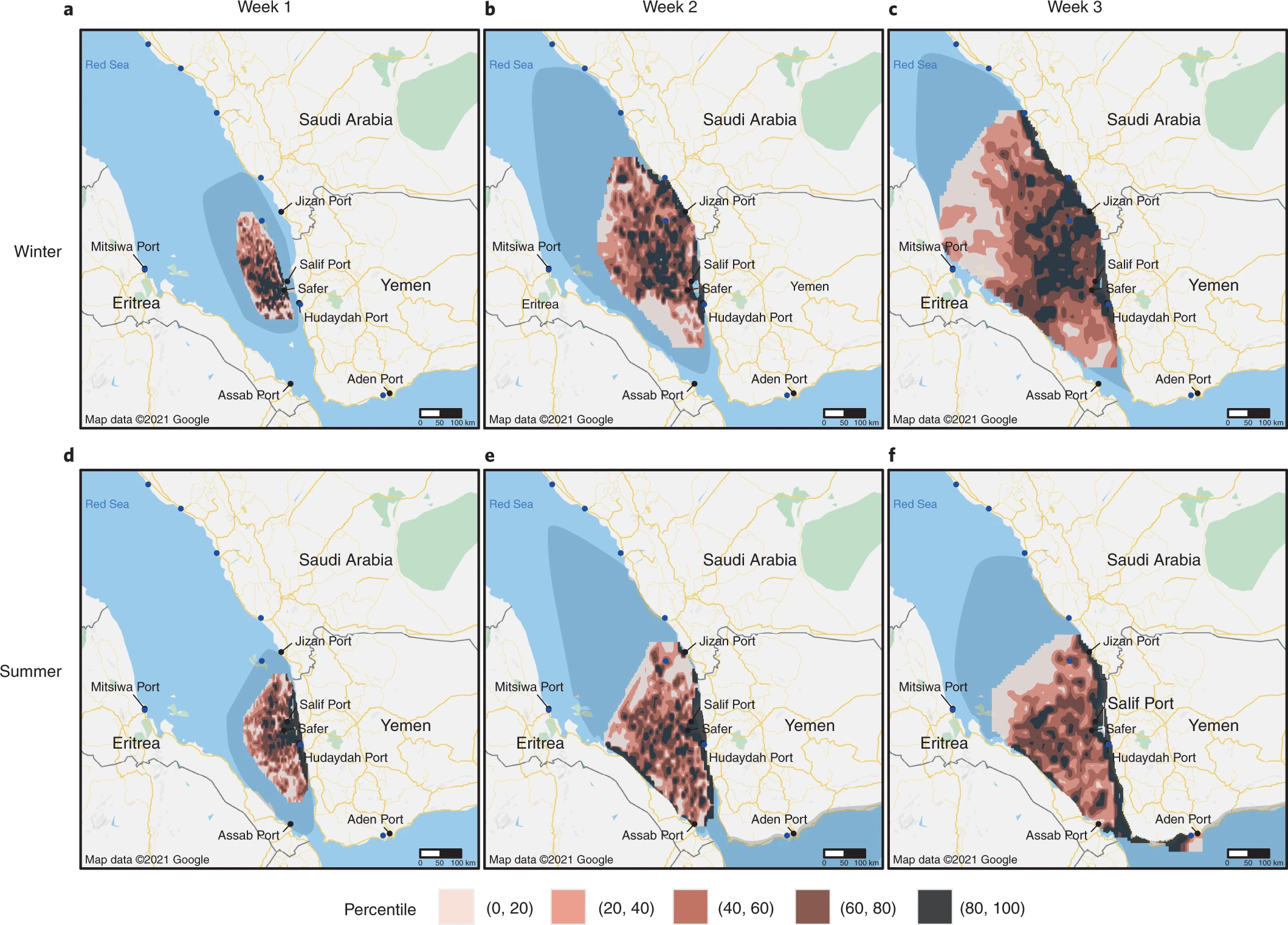

A massive prospective spill from a deserted oil tanker in the Red Sea could lead to catastrophic public health effects in war-torn Yemen and neighboring countries unless urgent action is taken, according to a study led by researchers at the Stanford University School of Medicine.
The FSO Safer (pronounced with a short “a”), located approximately 5 nautical miles off the coast of Yemen, contains 1.1 million barrels of oil — more than four times the amount spilled in 1989 by the Exxon Valdez. Abandoned since 2015 due to the conflict in Yemen, the dilapidated vessel is increasingly likely to leak oil due to deterioration of its hull, or to catch fire through the buildup of volatile gases or through a direct attack.
Currently, the Safer is under the control of the Houthis, an insurgent group of Islamists from northwestern Yemen. Despite the impending emergency, negotiations between the United Nations and the Houthis to inspect and repair the Safer have stalled indefinitely, and no long-term solutions, such as offloading the oil, have been publicly proposed.
“Most people can easily imagine how a massive spill might affect the environment, but the effects on public health, especially in a region undergoing a humanitarian crisis like Yemen, are harder to grasp, so we modeled it,” said Benjamin Huynh, a graduate student in biomedical informatics at Stanford. “Our hope is that by characterizing the public health threat the vessel poses, we can more accurately convey the urgency of the situation, and thus help push international parties to come to a solution.”
Their simulations revealed that air pollution from a full spill would increase the risk of cardiovascular and respiratory hospitalizations by 5.8% to 42%, depending on the duration of the spill and the presence of smoke from combustion. Cleanup workers and other individuals directly exposed to the oil could experience a 530% increased risk of cardiovascular and respiratory hospitalizations due to inhalation of fine particulate matter. These potential health effects are likely underestimated, given that oil spills are known to cause neurological, hematological, dermatological and psychiatric symptoms, according to the researchers.
“We knew of course that there would be some negative impacts of an oil spill, but were surprised by how many people would be impacted in the majority of our scenarios,” said David Rehkopf, ScD, an associate professor of epidemiology and population health, and co-director of the Stanford Center for Population Health Sciences. “We hope that puts more pressure on the international community to offload the oil and prevent this disaster.”
A paper describing the study will be published online October 11 in Nature Sustainability. Huynh is the lead author, and Rehkopf is the senior author.
Port closures may jeopardize aid
Major oil spills are known to have wide-ranging environmental and economic consequences. The looming danger that the Safer poses to the Red Sea’s unique ecosystem has been documented, but until now, the immediate public health impacts of a prospective spill from the oil tanker had not been clear.
The researchers modeled the Safer spilling oil under a variety of weather conditions, taking into account past wind patterns, currents, sea temperature, salinity and seasonal and daytime fluctuations in weather. Thousands of simulations covered a wide range of possible spill durations and trajectories, consistently pointing to catastrophic effects.
Their estimates showed that it would take six to 10 days for the oil to reach Yemen’s western coastline, impacting Yemen’s ports within two weeks and the port of Aden, located outside the Red Sea, within three weeks. The spill and subsequent port closures could disrupt the delivery of critical supplies, exacerbating shortages from an ongoing sea and air blockade of the country. (The blockade is led by Saudi Arabia as part of its intervention in Yemen’s civil war.) Clean water supply to millions of people would be threatened due to contamination of desalination plants. In addition, 8.4 million people might not receive food aid, and all of Yemen’s Red Sea fisheries would be at risk. Approximately 38% of Yemen’s fuel needs could be disrupted, causing fuel prices to spike.
“Yemen is very fuel-dependent, so losing fuel means shutting down things like hospitals and water systems,” Huynh said. “The main takeaway I want audiences to have is that this environmental disaster would also be a severe humanitarian disaster, and that a massive oil spill can substantially harm human health.”
Making the Safer safer
Another dire prediction from the study is that cleanup attempts would likely be futile, even under extremely optimistic conditions. The model assumed that cleanup would begin immediately, combine burning and dispersants with a highly efficient skimmer, and occur under ideal weather conditions. The simulations revealed that a six-day cleanup effort would not be more effective than letting the oil simply evaporate. Either way, nearly 40% of the oil would remain floating in the water.
“I hope audiences won’t learn about this issue and see it as a foregone conclusion or something that we can reasonably address after it happens,” Huynh said. “Our models show that cleanup efforts won’t be very helpful. The only real solution is to get the oil off the vessel, and there’s still time to do it.”
Other Stanford co-authors are Mathew Kiang, ScD, an instructor of epidemiology and population health; Elizabeth Chin, a graduate student in biomedical informatics; and Pascal Geldsetzer, MD, PhD, an assistant professor of primary care and population health.

